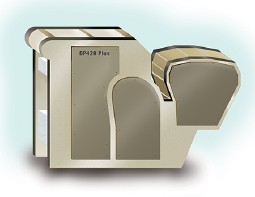More Print Tips
- • Maximum Impact: Is it Best to Send a Postcard or a Letter?
- • Drive Rapid Response to Your Direct Mail: 10 Pro Tips
- • The Usefulness and Utility of Print Marketing
- • Boost Sales with Brochures
- • 5 Opacity Tips You Should Know
- • The Window to Marketing
- • Profitable Postcard Marketing: Finding the Right Frequency
- • 3 Fundamentals for Nailing Your Direct Mail Marketing
- • Picking the Perfect Paper
Is a Bleed Right For Your Print Project?
The way you set up your print project can make all the difference in the final look and feel of your marketing piece. One of the most effective, yet simplest ways to change things up is by using a bleed in your design.
If you’re unsure what exactly a bleed is, how and when you should use it, and the potential challenges with adding a bleed to your project, keep reading. We’ll dig into the bleed concept and provide some best practices to make your print project look amazing every time.
What is a Bleed in Print?
A bleed is a printing technique where your design is printed bigger than the final product’s finished size and then cut down to size. It eliminates any unwanted white space or borders around the edge of your design.

To put it another way, have you ever seen a printed marketing piece where what’s printed runs all the way to the edges, while other printed pieces may have a white border where the printing stops? That’s a bleed.
The Pros and Cons of Bleeds in Print
Now that you understand what a bleed is, there are times that you may or may not want to go in this direction.

Here are some things to keep in mind when considering a bleed:
- Bleeds work well if your design has a full-colored background.
- If you have letters or images that you want to run right to the edge of your piece without the risk of being cut off, a bleed allows for that freedom.
- A bleed can be slightly more expensive depending on the sheet size. (Remember, the image is printed larger and cut down to your desired finished size.)
- If you’re printing a booklet or something that is going to be folded, you almost certainly want bleeds along interior borders, so it doesn’t look as though the project is unfinished. You want it to flow cleanly from one page to the next, and having the colors “meet in the middle” of the folded area is the best way to do that.
- Bleeds are also great if you’re going to cut your project down to a smaller size, while you may want to skip the bleed if you’re creating a project with an exact border.
Understanding the Bleed Marks on Your Proof

Once you’ve decided to use bleeds in your print job, you’ll want to understand the markings on your proof when you receive it. The trim marks are generally seen as corner line markings just inside the printed content and ensure that when your pages are trimmed, you will see the full image on the page with no white border. Fold marks are generally dashed lines indicating where you fold an 11" x 17" sheet in half, for instance.
Fortunately, using the default values within your graphic design software often provides the best option. It is still helpful to understand how bleeds, trims and folds work to create the most professional print project possible.


Ready to Print: Handbook for Media Designers
by Kristina Nickel
Ready to Print is an easy to follow reference for designers that thoroughly explains each stage of how to prepare data for prepress and production. Clearly structured chapters on “Paper,” “Printing Techniques,” “Typography,” “Trapping,” “Color,” “Image Editing,” and “PDF” as well as abundant descriptive graphics impart essential knowledge in a comprehensive way. From the traits of various types of paper to the recommended settings when exporting data into a print-ready PDF, the book thoroughly explains both opportunities and hurdles in pre-print and production. In short, the book shows all designers how to create the best-possible print product.



Share this